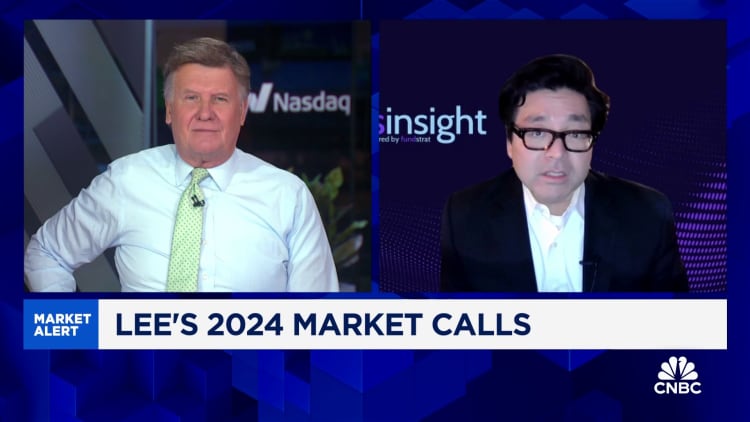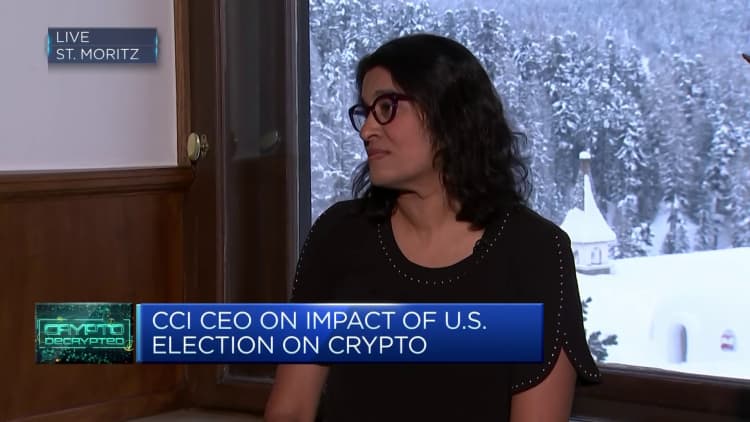
Dado Ruvic | Reuters
Crypto investors are waiting for the Securities and Exchange Commission to approve a raft of spot bitcoin applications, likely Wednesday
With a spot bitcoin ETF now looking very real, attention is turning to the details of how it will trade, how much it will cost, how much of the runup in bitcoin is due to demand that has been pulled forward, and premium or discount valuations.
Fees are competitive and will get more so
With nearly a dozen ETFs competing for attention, bitcoin buyers will be very price sensitive, and issuers are already engaged in a modest price war. For example, Cathie Wood’s ARK Invest, which is partnering with 21Shares to launch a bitcoin ETF, initially announced a fee of 0.8% but on Monday announced no fee for the first six months.
Other issuers are also steeply discounting prices, with several (Bitwise, ARK, Invesco) offering 0% fee for the first six months, while Grayscale is charging 1.5%.
Spot bitcoin ETF fees
Bitwise (GBTC) 0.0% (after first six months: 0.24%)
ARK Invest/21Shares (ARKB): 0.0% (after first six months: 0.25%)
Invesco Galaxy Bitcoin ETF (BTCO) 0.0% (after first six months: 0.59%)
iShares Bitcoin Trust (IBIT) 0.20% (after first 12 months: 0.30%)
VanEck Bitcoin Trust (HODL) 0.25%
Franklin Templeton Digital Holdings Trust 0.29%
Fidelity Wise Origin Bitcoin Trust (FBTC) 0.39%
WisdomTree Bitcoin Trust (BTCW) 0.50%
Valkyrie Bitcoin Fund (BTF) 0.80%
Grayscale Bitcoin Trust (GBTC) 1.50%
Invesco’s Galaxy Bitcoin ETF has set its expense ratio at 0.0% for the initial six months and the first $5 billion in assets, and goes to 0.59% after.
How will a spot bitcoin trade relative to bitcoin and bitcoin futures?
One of the main questions is how well a spot bitcoin ETF will track bitcoin and bitcoin futures.
Simeon Hyman, ProShares’ global investment strategist who manages the largest bitcoin futures ETF, the ProShares Bitcoin Strategy ETF (BITO) that launched in October 2021, noted that bitcoin futures ETFs have tracked bitcoin “fairly well.” But he also told me, “The spot market for bitcoin is still not mature. The futures market is regulated and mature. We’ll have to wait and see how well they track against each other.”
Another issue is whether the bitcoin ETFs will trade at a premium or discount to their net asset value. In this case, the NAV is the value of the bitcoin owned by the ETF. Some are concerned that the creation and redemption process that was agreed upon to create spot bitcoin ETFs could result in a bitcoin ETF trading at a premium to its NAV.
“Some of these ETFs will trade at a premium, and then as investors start to understand the nuances, that’s when we will filter out the nuances and the small points,” Reggie Brown, GTS co-Global Head of ETF Trading & Sales, told Bloomberg.
Most market participants believe that any premiums will be small.
Som Seif runs the Purpose Bitcoin ETF, the first bitcoin ETF to launch in Canada in 2021.
“Our product trades extremely efficiently, with very tight spreads,” Seif told me. “You should see no impact on trading efficiency. There will be a breadth of players, and the underlying asset is very liquid.”
Matt Hougan, CIO of Bitwise Asset Management, one of the applicants for a bitcoin ETF, agreed: “The underlying market is very liquid,” he told me. “We have been in the market buying and selling bitcoin for years. The main issue are, who gets the liquidity, and who wins on expenses.”
How much money will these ETFs attract?
It’s not clear how much new money will be dragged in once a spot bitcoin ETF trades.
However, two ETF-related events have helped propel interest in bitcoin in the last two years:
1) The beginning in trading of bitcoin futures ETFs (BITO), starting in October 2021, which helped move bitcoin from almost $10,000 in October of that year to over $40,000 by January 2022. The largest bitcoin futures ETF, ProShares bitcoin Strategy ETF (BITO), recently passed $2 billion in assets under management, according to ProShares.
2) Blackrock’s application for a bitcoin ETF on June 16, 2023, helped moved bitcoin from roughly $25,000 to $30,000 in a matter of days.
Brown estimated that the combined ETFs could have fairly significant inflows. “Thirty days out, it could be $2 billion-$3 billion,” he told Bloomberg, estimating it could attract $10-$20 billion in new assets this year.
Still, considering the current market capitalization of bitcoin is near $900 billion, that is not huge inflows. The Canadian spot bitcoin ETF, the Purpose Bitcoin ETF, has about $400 million in assets after over two years.
What’s next?
The next issue, Hougan says, is whether the big institutions and financial advisors will allow their investors to trade bitcoin on their platforms.
“Just because a bitcoin ETF has been launched, it doesn’t mean JP Morgan will get in,” Hougan said.
After that, Hougan said the next big events will be the bitcoin halving in April, followed by any interest rate cuts from the Federal Reserve.
“Higher interest rates are bad for non-yielding assets like bitcoin or gold,” he told me. “If you get 5% on cash, that’s tough competition.”
